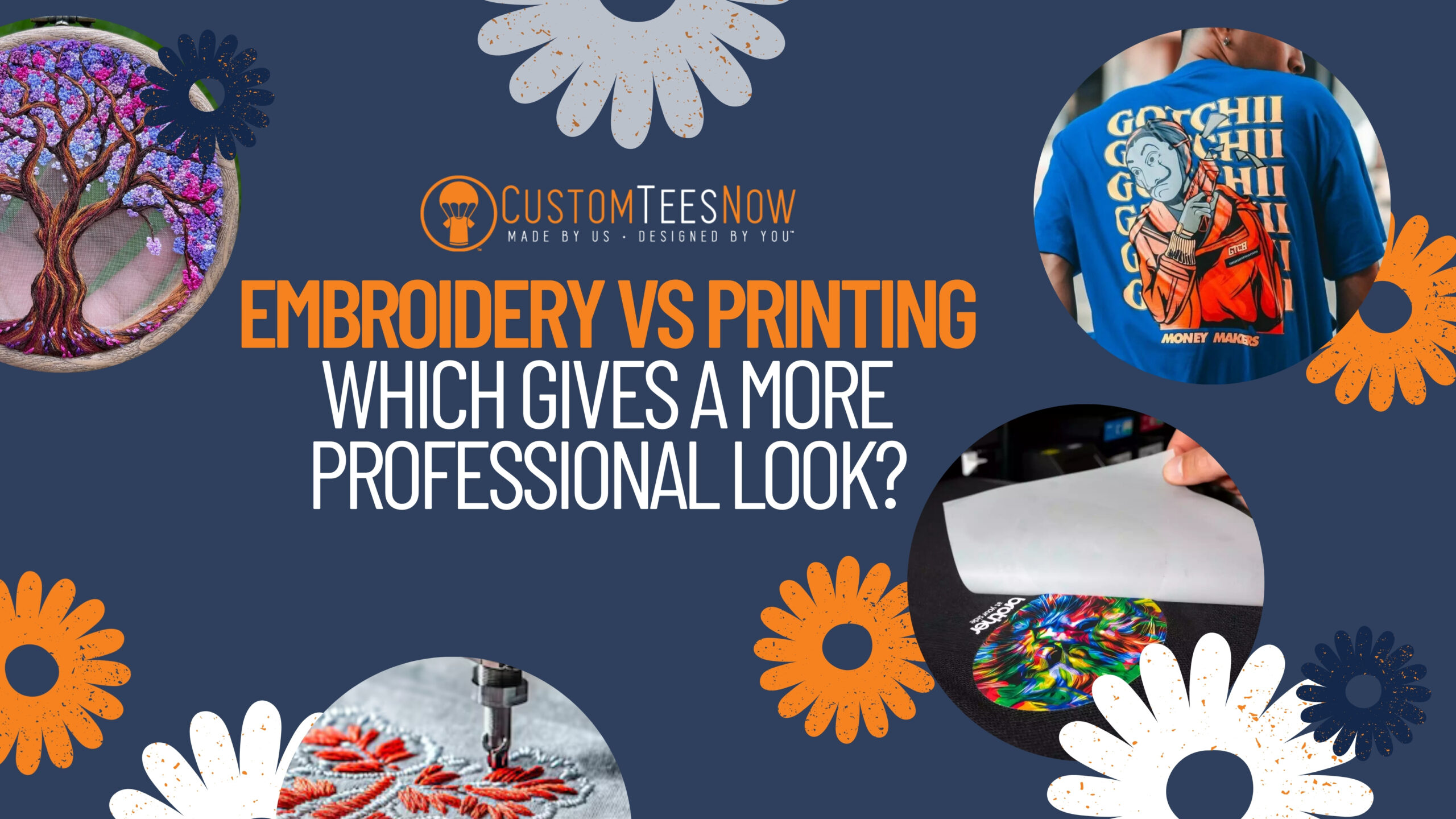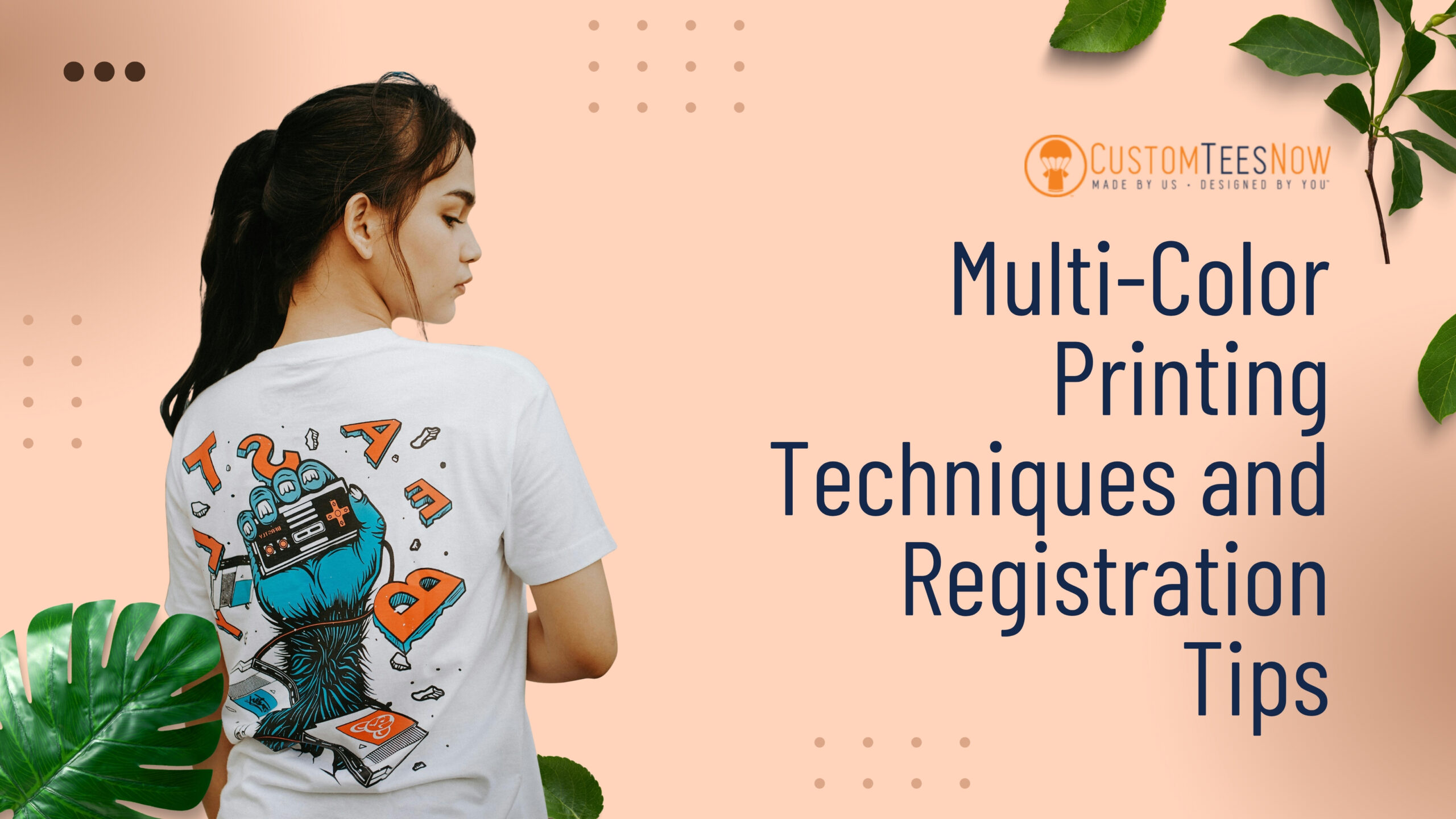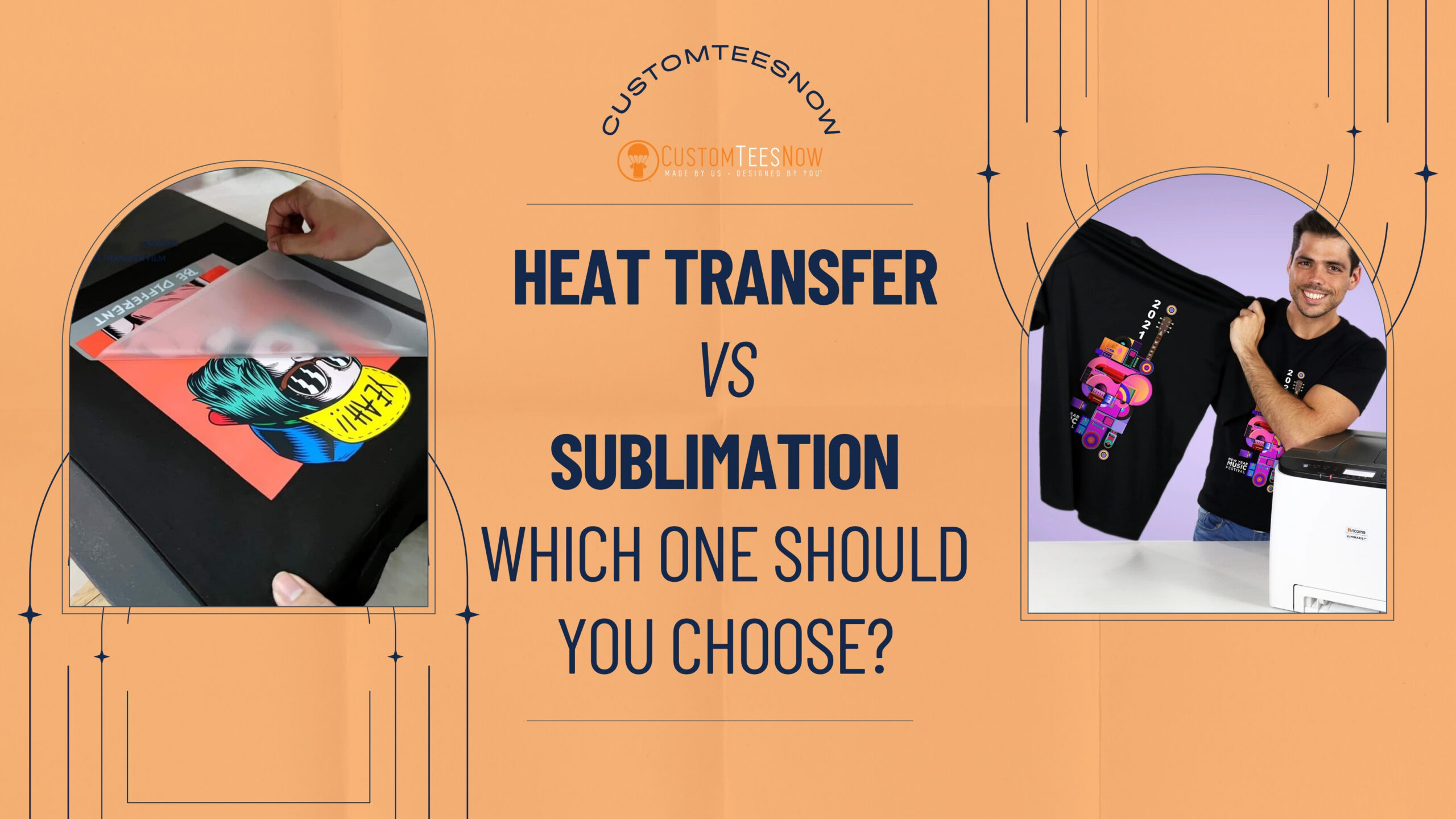
- October 12, 2025
Embroidery vs Printing: Which Gives a More Professional Look?
When it comes to custom apparel, the choice between embroidery and printing can define your brand’s professional image. Whether you’re outfitting a corporate team, creating merchandise for a brand, or designing uniforms for an event, the customization method you select affects aesthetics, durability, cost, and perceived value. At Custom Tees Now, based in Naples, FL, we’ve helped thousands of customers transform their ideas into high-quality, professional-grade apparel. In this comprehensive guide, we’ll explore the embroidery vs. printing debate to help you decide which method delivers the polished look your project demands.
By the end, you’ll understand the strengths and weaknesses of each technique, its ideal applications, and how to leverage them to elevate your brand. Let’s dive into the nuances of embroidery and printing, compare their professional appeal, and provide practical tips to ensure your custom apparel stands out.
Understanding Embroidery and Printing: The Basics
To compare the professional look of embroidery and printing, it’s essential to understand how each method works and how it applies to apparel like T-shirts, hoodies, or tote bags.
What Is Embroidery?
Embroidery involves stitching a design directly into the fabric using specialized threads and machines, creating a textured, raised effect. This method is known for its durability and premium aesthetic, making it a popular choice for businesses aiming to project sophistication. At Custom Tees Now, our custom embroidery services use cutting-edge technology to ensure precision, whether you’re adding a logo to a polo shirt or a monogram to a jacket. Common applications include company logos on uniforms, personalized accessories, or intricate designs on thicker fabrics.
What Is Printing?
Printing, particularly screen printing, involves applying ink to the fabric’s surface through a mesh screen, with each color requiring a separate screen. The ink bonds with the fabric to produce a vibrant, flat image. Our custom T-shirt printing services excel at delivering bold, colorful designs with flexibility for both small and large orders. Printing is ideal for detailed graphics, photographs, or multi-color designs, making it a staple for promotional T-shirts, event merchandise, and casual apparel.
Both methods have unique strengths, but their suitability for a professional look depends on your project’s goals. Let’s examine what defines professionalism in custom apparel.
What Makes Custom Apparel Look Professional?
A professional look in custom apparel goes beyond aesthetics—it conveys quality, reliability, and attention to detail. Whether you’re designing for a corporate team, a small business, or a high-profile event, several factors contribute to a polished appearance. Durability ensures the design withstands washing and wear without fading or cracking. The texture and finish should feel premium and look refined up close. The method must align with your brand’s identity —whether luxurious or approachable —and work across various apparel types and settings. Finally, cost-effectiveness matters, especially for bulk orders, to deliver value without compromising quality.
With these criteria in mind, let’s compare embroidery and printing to determine which offers the edge for a professional appearance.
Embroidery: The Premium Choice for Elegance
Embroidery is often associated with high-end apparel, from monogrammed dress shirts to luxury brand logos. Its three-dimensional, stitched quality sets it apart from surface-level printing, making it a favorite for businesses aiming to impress.
Embroidery’s appeal lies in its refined aesthetic and durability. The raised, threaded design feels luxurious and looks meticulously crafted, instantly elevating the garment’s perceived value. A logo embroidered on a polo shirt or jacket signals quality craftsmanship, ideal for professional settings like corporate offices or upscale retail. Because the design is stitched into the fabric, it resists fading, cracking, or peeling, even after dozens of washes, making it perfect for uniforms or branded apparel meant for long-term use. Embroidery also performs well on a variety of materials, from thick hoodies to delicate polos, ensuring consistency across your apparel line.
However, embroidery has limitations. It struggles with intricate or multicolor designs due to thread constraints; fine details like small text can blur, and gradients are nearly impossible. Larger designs require more stitches, increasing costs, which can be a drawback for budget-conscious projects. On thin T-shirts, heavy embroidery may cause puckering or distortion, reducing the professional finish.
Embroidery is ideal for corporate uniforms, high-end merchandise for luxury brands, monogrammed gifts, and simple designs such as single-color logos. For example, a law firm ordering embroidered polo shirts for its staff benefits from the polished, durable look that reinforces a professional image.
Printing: The Versatile Choice for Bold Impact
Screen printing, the most common method for custom T-shirts, offers unmatched flexibility for vibrant, eye-catching designs. Its ability to handle complex graphics makes it a staple for promotional and casual apparel, but can it compete with embroidery’s professional edge?
Printing excels at reproducing intricate logos, photographs, or multi-color graphics with sharp clarity, making it ideal for brands with bold, colorful identities. It’s also cost-effective for large orders, as per-unit costs decrease significantly with quantity, perfect for event merchandise or team uniforms. Unlike embroidery, printing sits lightly on the fabric, making it suitable for both standard T-shirts and performance wear without distorting the fabric. At Custom Tees Now, our printing process is streamlined for quick production, with email proofs sent within one day and delivery in just a few days.
On the downside, printed designs, even with high-quality inks, may fade or crack over time, especially with frequent washing or improper care. The flat, two-dimensional appearance can feel less premium than embroidery’s tactile texture in certain contexts. Additionally, each color in a printed design requires a separate screen, which can increase costs for complex, multi-color designs in small runs.
Printing is best for promotional T-shirts, bold retail merchandise, large orders on a budget, or designs with gradients and fine details. For instance, a tech startup launching a product might choose printed T-shirts with a vibrant, multi-color logo to distribute at a trade show, maximizing visual impact affordably.
Comparing Embroidery and Printing: A Side-by-Side Look
To clarify the differences, here’s a comparison table summarizing the key factors influencing the professional look of embroidery vs. printing, informed by industry standards such as those outlined by Printful’s guide on embroidery vs. printing:
| Aesthetic | Raised, textured, premium feel | Flat, vibrant, bold visuals |
| Durability | Excellent (resists fading, no cracking) | Good (may fade/crack with heavy use) |
| Design Complexity | Best for simple logos/monograms | Ideal for intricate, multi-color designs |
| Cost | Higher for large designs/small orders | More affordable, especially for bulk |
| Fabric Compatibility | Best for thicker fabrics (e.g., polos) | Works on lightweight T-shirts and more |
| Turnaround Time | Slightly slower due to stitching process | Faster, ideal for tight deadlines |
| Professional Appeal | High-end, corporate, subtle elegance | Bold, modern, versatile for branding |
This table shows that neither method is inherently superior—the choice depends on your specific needs, budget, and brand image.
Key Considerations for Your Project
Choosing between embroidery and printing for a professional look requires balancing your goals with practical constraints. Your brand’s identity and audience are critical. A luxury spa might opt for embroidered towels to convey exclusivity, while a fitness brand might choose printed performance tees for a bold, energetic vibe. The garment type matters too—embroidery shines on structured items like polos or jackets, while printing suits lightweight T-shirts or performance wear.
Budget and order size are also key. Embroidery’s setup fees and stitch counts can increase costs for large designs or small orders, whereas printing scales well for bulk orders, with per-unit costs dropping significantly. For example, a small business ordering 10 embroidered polos may pay more per item than a festival ordering 100 printed T-shirts. Design complexity is another factor—if your logo includes gradients or multiple colors, printing is likely the better choice, while embroidery excels for simple, bold designs with fewer colors.
Finally, consider the apparel’s use case. For daily-wear uniforms, embroidery’s durability ensures a lasting professional look. For one-off events or promotional giveaways, printing’s affordability and visual impact may be more practical.
2-1 Odds: Which Method Wins for Professionalism?
To highlight the strengths of each method, here’s a 2-1 odds comparison:
- Embroidery Wins: Corporate uniforms (e.g., a hotel chain’s staff polos). The stitched logo’s durability and premium texture project professionalism, outlasting printed designs in high-wear settings.
- Printing Wins: Event merchandise (e.g., festival T-shirts). Bold, colorful designs grab attention and are cost-effective for large runs, ideal for short-term, high-impact branding.
- It’s a Toss-Up: Small business branding. A coffee shop might choose embroidered aprons for baristas to convey quality, but opt for printed T-shirts for a promotional giveaway to maximize budget and design flexibility.
The “more professional” method depends on how you define professionalism for your project. Embroidery offers timeless elegance, while printing provides modern versatility.
Tips to Maximize Professionalism
To ensure your custom apparel looks polished, follow these tips:
- Choose high-quality garments, such as combed cotton or moisture-wicking blends, from our custom apparel catalog.
- Simplify designs for clarity—avoid tiny embroidery text or overly complex printing colors.
- Request a digital proof (sent within 24 hours) to confirm the design’s quality before production.
- Match colors to your brand using Pantone for printing or thread charts for embroidery.
- Provide care instructions to maintain design longevity, such as cold-washing prints or avoiding ironing embroidered areas.
Why Choose Custom Tees Now?
At Custom Tees Now, we simplify the process of creating professional custom apparel, whether you choose embroidery or printing. Based in Naples, FL, we offer free shipping with guaranteed delivery by your deadline (e.g., Nov 10, 2025, for current promotions), instant price quotes via our online calculator, and expert support to refine your design and source specific garments. With no minimum order requirements, we cater to small businesses and one-off projects alike.
Ready to start? Explore our custom embroidery services for a premium, stitched look or dive into custom T-shirt printing for vibrant, bold designs. Contact us at (888) 383-4876 to discuss your vision or request a quote today!
Conclusion: Embroidery or Printing—Which Is Right for You?
The choice between embroidery and printing hinges on your priorities. If you seek a sophisticated, durable look for corporate uniforms or luxury merchandise, embroidery’s tactile, long-lasting finish is unmatched. For bold, colorful branding on a budget, especially for large orders or complex designs, printing offers versatility and visual impact. At Custom Tees Now, our online designer and expert team ensure your apparel reflects the professionalism you want to project, from design to delivery. Visit Custom Tees Now to create your custom apparel today and bring your vision to life with the perfect customization method.
FAQs
Which is more durable, embroidery or printing? Embroidery is generally more durable, as the stitched design is part of the fabric and resists fading or cracking, even after many washes. Printing, while durable with high-quality inks, may fade over time with frequent washing or improper care. For long-term use, like uniforms, embroidery often lasts longer.
Is embroidery or printing more expensive? Embroidery tends to cost more for large designs or small orders due to stitch counts and setup fees. Printing is more cost-effective, especially for bulk orders, as per-unit costs drop significantly. Use our custom apparel catalog to get instant quotes and compare costs.
Can I use complex designs with embroidery? Embroidery works best for simple logos or monograms with fewer colors, as intricate details or gradients can blur. Printing excels at multi-color, detailed designs, such as photographs or gradients, offering greater flexibility for complex artwork.
Which looks more professional for my brand? Embroidery offers a premium, tactile look ideal for corporate uniforms or luxury merchandise. Printing delivers bold, vibrant designs perfect for promotional T-shirts or events. Your choice depends on your brand’s identity and audience.
How fast can I get my order? At Custom Tees Now, we provide email proofs within 24 hours and fast delivery, with free shipping guaranteed by your deadline (e.g., Nov 10, 2025, for current promotions). Contact us at (888) 383-4876 to start your order today!


